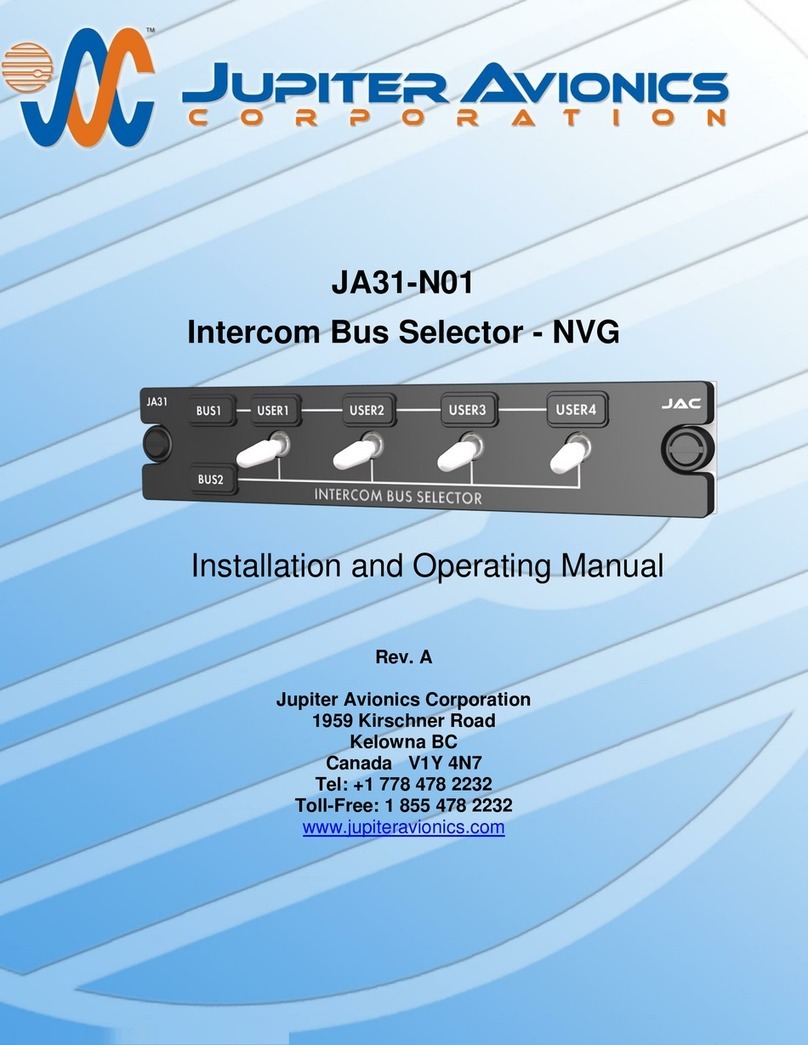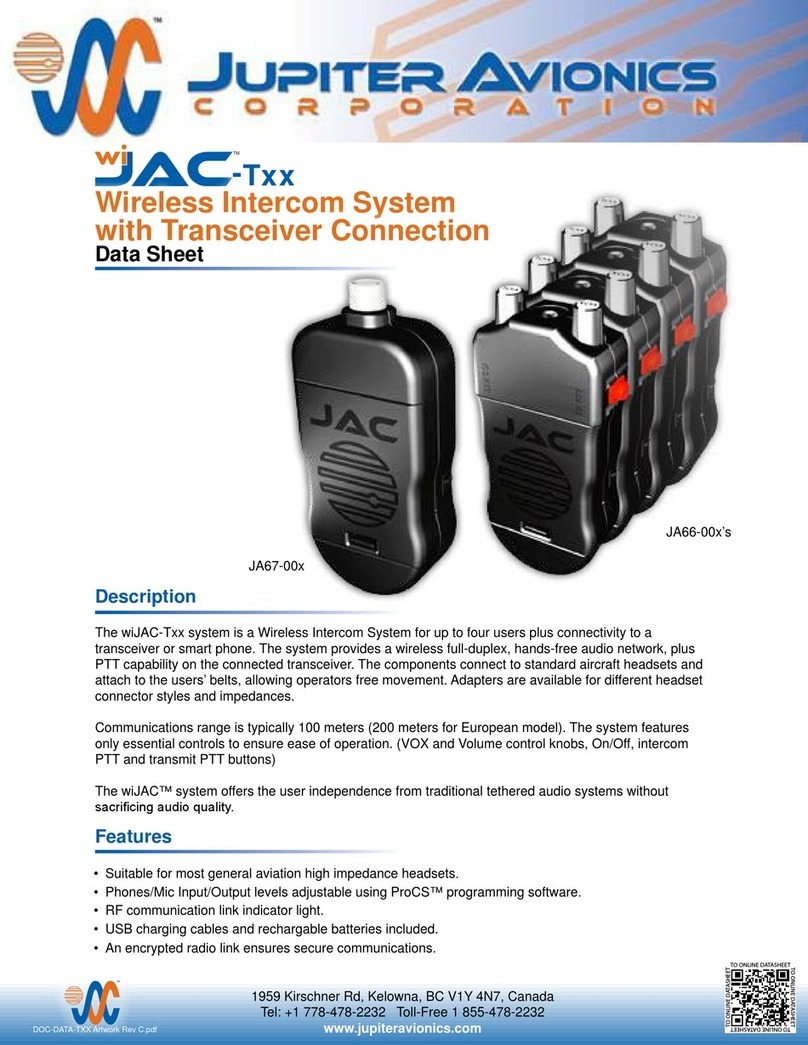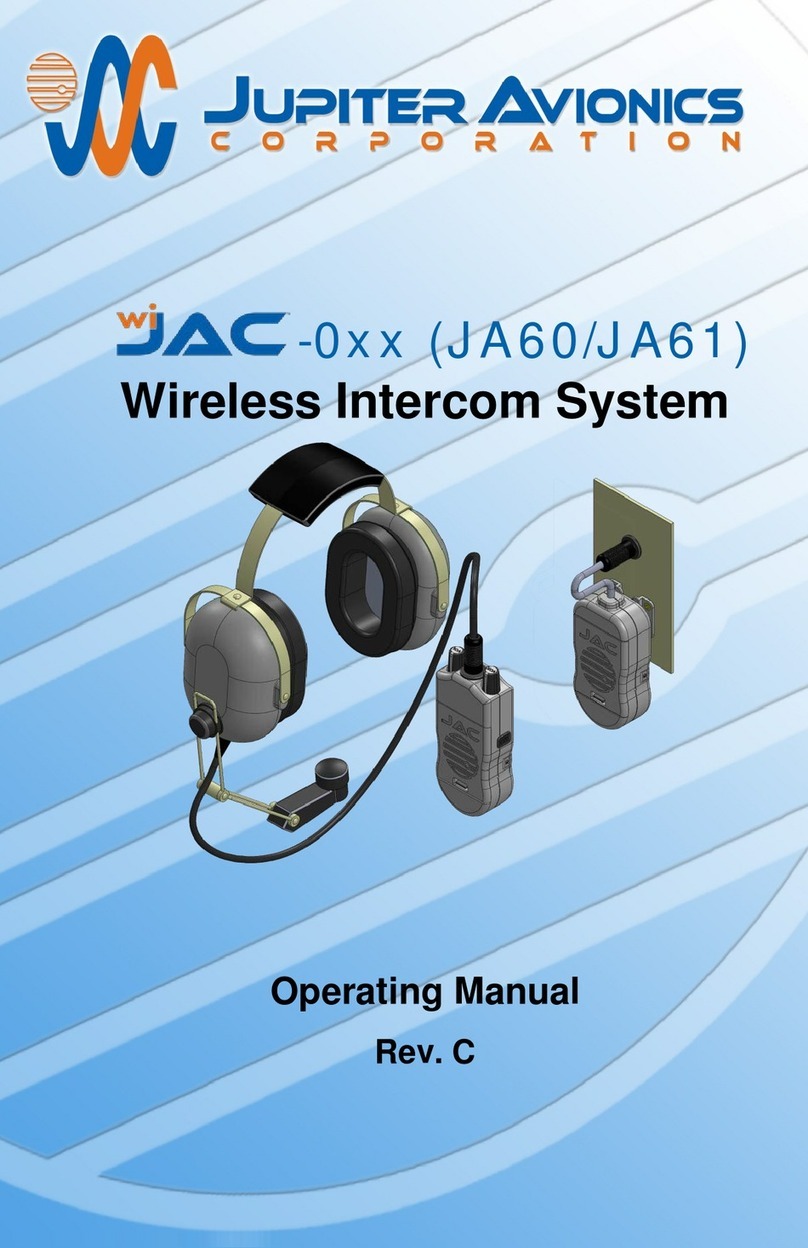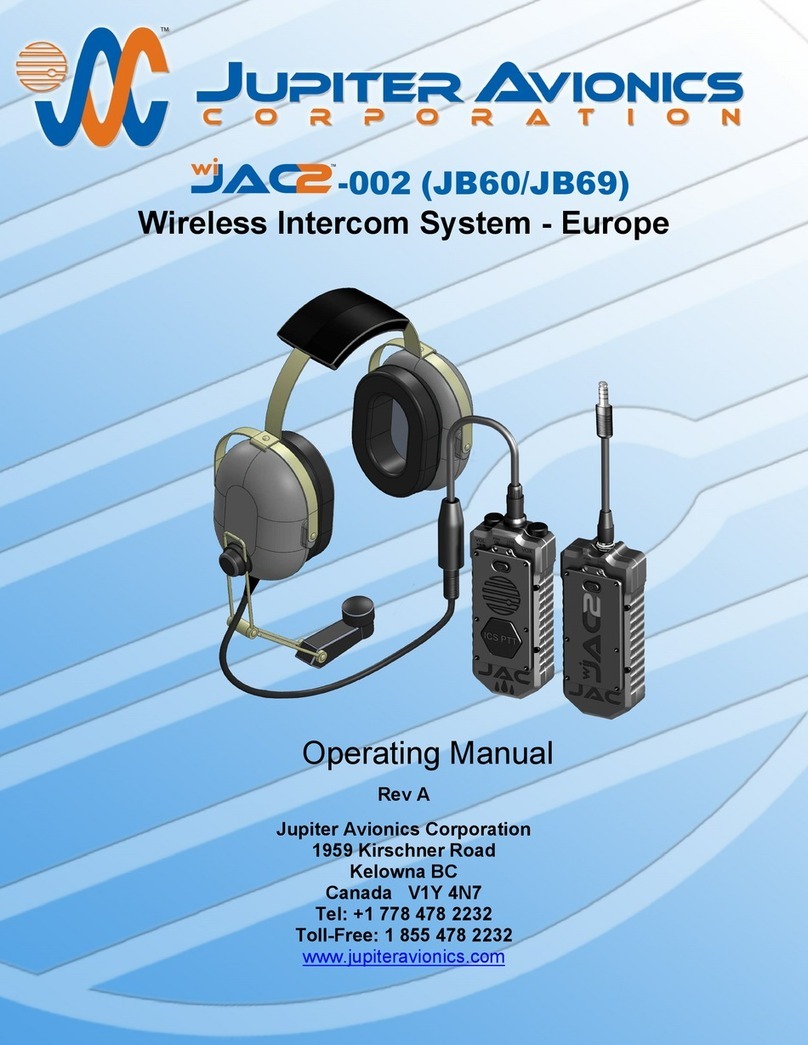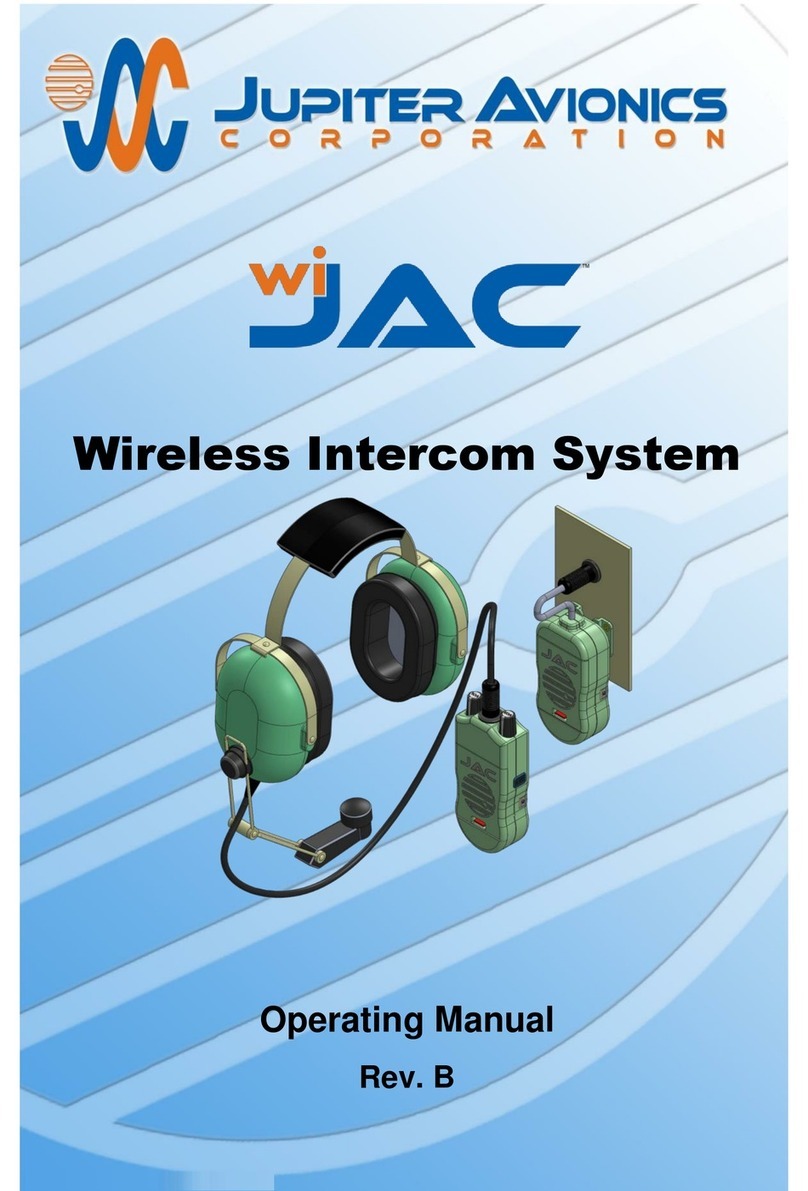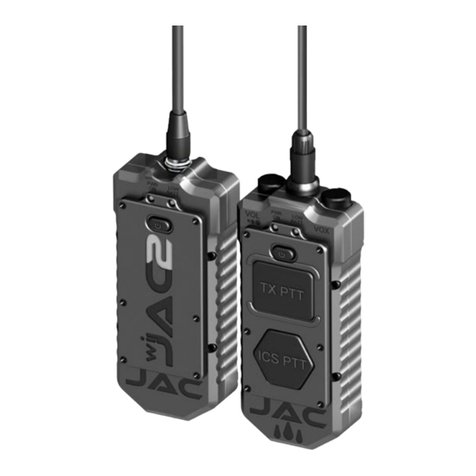
wiJAC-Txx Wireless Intercom System with Transceiver Connection
Operating Manual
Rev B Page 4
4 Controls, Annunciators and Connectors
4.1 (ON/OFF) Button – Both units
The ON/OFF control is a push button switch marked with the symbol and is
located on the left side of the unit. To turn the unit on, press the ON/OFF button
once. To turn the unit off, press and hold the ON/OFF button until the PWR ON
and LOW BATT annunciators turn off (approximately three to five seconds).
4.2 Controls – JA66
4.2.1 VOX (Voice Operated Switch)
The Voice Operated Switch control is a rotary knob marked VOX located on the
top of the JA66 Headset Adapter. To reduce the level of the sound needed to
route the microphone audio to the Transceiver Adapter, turn the VOX knob
counterclockwise. To increase the level of the sound needed to route the
microphone audio to the Transceiver Adapter, turn the VOX knob clockwise.
Adjust this setting for proper VOX operation as ambient noise levels change.
4.2.2 VOL (Phones Volume Control)
WARNING: Loud noise can cause hearing damage. Before using the
headset, set the volume to minimum, and then slowly increase it to a
comfortable listening level.
The volume control is a rotary knob marked VOL (volume) located on the top of
the JA66 Headset Adapter. To reduce the volume of the audio heard in the
headset rotate the VOL knob counterclockwise. To increase the volume of the
audio heard in the headset rotate the VOL knob clockwise.
4.2.3 ICS PTT (Push To Talk) Button
The intercom Push To Talk button is a blue convex push button switch located on
the right side of the JA66 Headset Adapter. The ICS PTT markings are located
on the back and front of the unit. When the ICS PTT button is pressed and held,
the VOX threshold is overridden, and microphone audio is routed to the paired
JA67 Transceiver Adapter(s).
4.2.4 TX PTT (Push To Talk) Button
The Transmit Push To Talk button is a red cylindrical push button switch on the
left side of the JA66 Headset Adapter. The TX PTT marking is located on the
front and back of the unit. When the TX PTT button is pressed and held,
microphone audio is routed to the Transceiver Adapter and the TX Key output is
activated. (See sections 6.1 and 6.2 for audio routing details.)
This is the user’s Transmit ‘Push-to-talk’ (TX PTT) button. While this button is
pressed, the wiJAC-D01 system will allow the user to transmit on the connected
transceiver. If the TX PTT button is used, the VOX threshold will be overridden
(see section 4.2.1 above).
